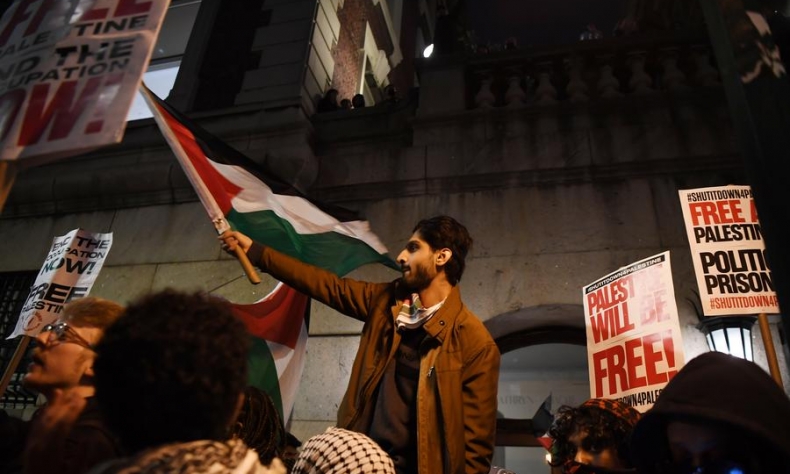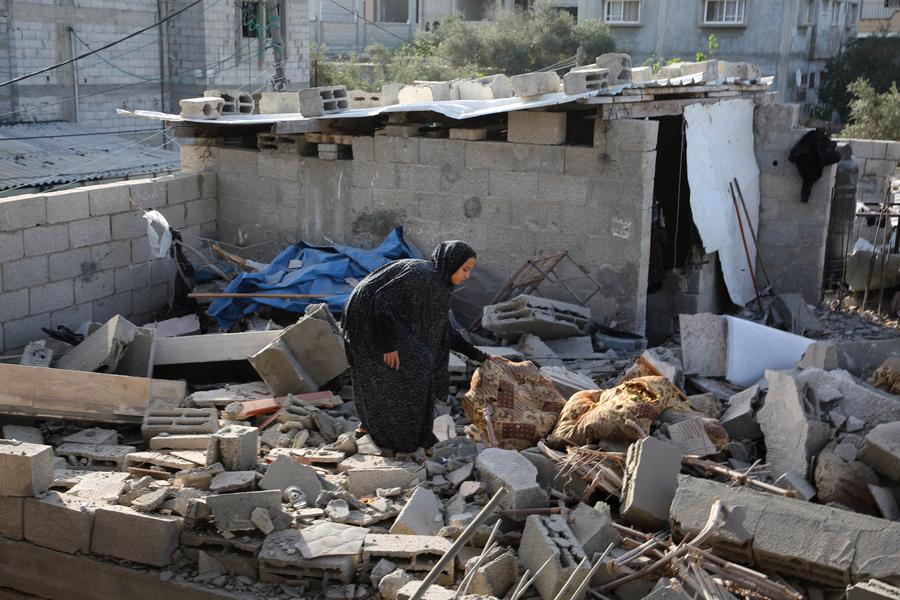Why Young Americans Stand with Gaza

Gaza represents an expression of the instability and tragedy that characterizes social life in the U.S. Young people in America both relate to the suffering imposed on Palestinians and find inspiration in their resistance amid seemingly insurmountable challenges.
Scenes from college campuses across the U.S. have shocked the world. From Columbia University to the University of Texas at Austin, riot police and other heavily-armed security forces have been deployed to suppress encampments of peaceful pro-Palestine demonstrators. Hundreds of students and professors have been arrested. Politicians and college administrators have threatened to call the National Guard to break up the encampments. These developments are reminiscent of the anti-Viet Nam war movement that led to four students being killed by the National Guard on May 4, 1970, during an anti-war protest at Kent State University.
Instead of asking why young people in the U.S. are protesting in support of Palestine, prominent members of the U.S. political and media establishment have attempted to delegitimize the protests. Speaker of the House Mike Johnson called the student protests “antisemitic” in a press conference at Columbia University on April 24.
He was received by loud boos from the crowd. Israeli Prime Minister Benjamin Netanyahu made a similar claim and called on U.S. authorities to use force to end the protests. Several mainstream media publications such as the New York Times denounced the protesters for their allegedly disruptive methods.
However, the condemnations cannot take away from the legitimate reasons why young people are taking a stand for Palestine in this time of crisis. First and foremost, students and those who have joined them are expressing a very real concern for the Palestinian people. Israel’s military operation in Gaza has killed over 34,000 Palestinians with thousands more yet to be found under the rubble. Several UN reports have detailed the massive levels of destruction of infrastructure and the grave risk of famine that has resulted from bombardment and the ongoing Israeli blockade of humanitarian aid. This only scratches the surface of the humanitarian catastrophe that is taking place in Gaza.
In many ways, young people in the U.S. are experiencing the most publicly visible war of the last several decades. Hospital bombings, raids of civilian infrastructure and refugee camps, and the myriad forms of violence inflicted upon the Palestinians in Gaza are being documented in real time on popular social media platforms such as X and TikTok. This has sparked understandable anger amongst youth in the face of injustice, especially given that U.S. political representatives have been hardly an unbiased party to the conflict. The Joe Biden administration has sent billions in weapons to Israel, repeatedly stymied ceasefire resolutions at the UN Security Council, and is targeting the very platforms such as TikTok disseminating information on Gaza. Young people in the U.S have thus come to the conclusion that Washington is facilitating genocide in their name.

We can look back to the Viet Nam war era for further guidance into understanding the impassioned support among young Americans for Gaza. The U.S. officially entered Viet Nam in 1964 as the Civil Rights movement reached a highpoint. Young people found themselves caught within political and economic headwinds. Anger erupted at rising levels of economic inequality, war and racial discrimination, or what Martin Luther King Jr. called the “triple evils” of American society. Large numbers of college students demanded an end to U.S. involvement in Viet Nam as a key component of a broader vision for what a more equal and harmonious society should look like.
Young people in the U.S. arguably face even more complex challenges in the current period. The Black Lives Matter protests of 2020 compelled millions of young people to march for justice for the victims of police brutality. While on the surface the protests primarily focused on police brutality, their massive size reflected a growing awareness among young people that downward economic pressure, a pandemic, and racial injustice together possessed life or death implications.
These challenges haven’t gone away. Young people in the U.S. face high rates of poverty, student debt and joblessness. Precarious economic circumstances have led to an increase in physical and mental health problems, as well as a growing distrust in the established political and economic order. Gaza therefore represents an expression of the instability and tragedy that characterizes social life in the U.S. Young people in America both relate to the suffering imposed on Palestinians and find inspiration in their resistance amid seemingly insurmountable challenges.
Furthermore, geopolitical headwinds have placed the U.S.’ global position in question. The genocide in Gaza is another signal of U.S. decay and one of the biggest challenges to the ideology of American exceptionalism in its modern history. The Biden administration’s inability to resolve its own internal contradictions coupled with growing interventionism has only damaged the credibility of the U.S.’ so-called “democracy.”
There is a saying that those who forget history are bound to repeat it. The elites that govern the United States have since their inception institutionalized a kind of historical amnesia to maintain geopolitical and economic dominance. However, the contradictions of the U.S. empire periodically present moments where the amnesia fades and significant segments of the population are compelled to join the global cause for peace, justice and people-centered democracy. We very well could be witnessing one of these moments now, and it is critical that the real reasons behind its emergence are not ignored.
The author is an independent journalist and researcher in the United States. He is a contributing editor to the Black Agenda Report and founding member of the No Cold War international campaign.
 Facebook
Facebook
 Twitter
Twitter
 Linkedin
Linkedin
 Google +
Google +










